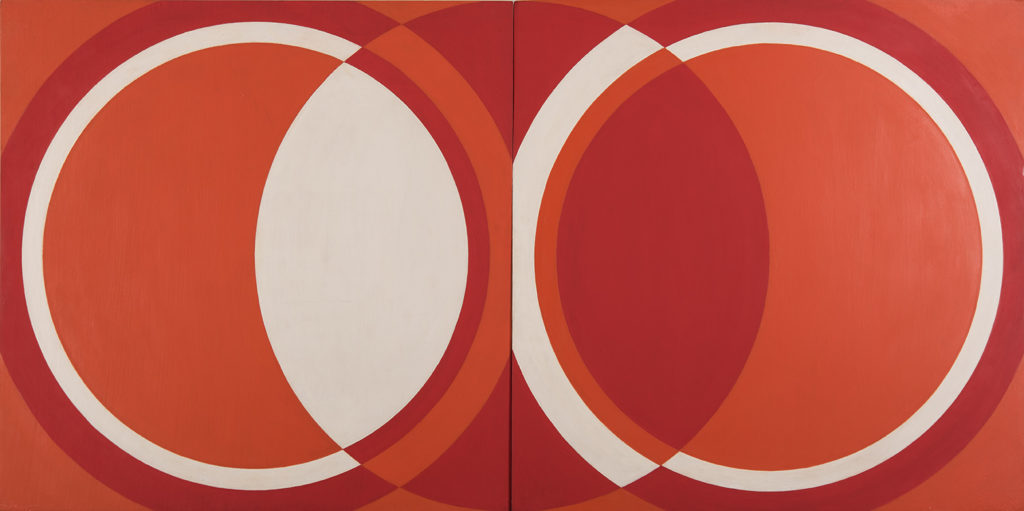After studying at the École des Beaux-Arts de Paris from 1946, Joël Stein, beginning in 1949, frequented the studio of Fernand Léger, absorbing the cubist’s social humanism and commitment to producing works in a variety of media including film. In 1956 Stein began to produce geometric abstract paintings and prints where the forms conformed to a mathematical structure. At the same time, Stein experimented with the notion of the labyrinth in two dimensions creating his first reliefs. In 1960 he was one of the co-founders of the collective, Centre de Recherche d’Art Visuel, also known as GRAV (Group de recherche d’art visual). GRAV consisted of 11 opto-kinetic artists who were advocates of Victor Vasarely’s belief that the idea of the individual artistic identity was out-of-date. Among the artists in GRAV were Hugo Demarco, Héctor García Miranda, Julio LeParc, François Molnar, Horatio Garcia Rossi, François Morellet, Francisco Sobrino and Jean-Pierre Yvaral, the son of Victor Vasarely. The 1961 GRAV manifesto proposed that the public should directly participate in art and this was to be encouraged through the presentation of interactive labyrinths. Among the first projects of GRAV was the study of the polarization of light which they gave form to in light boxes which they called Polascopes. These initially consisted of rotating discs and mirrors that created kaleidoscopes of color.
The artists in GRAV were to have their individual identities merged within the collective. The collective created public labyrinths where the environments were structured around contemporary scientific and technological media. From the first presentation of a labyrinth at the Paris Beinnale in 1963, the artistic ensemble of GRAV explored the possibilities of kinetic and Op art through the use of a variety of artificial light and mechanical movement. Ephemeral color/light patterns were created by mechanical devices controlled to some extent by the spectators. They went on in further works to incorporate the physical reaction of the public into the mechanical manipulation of their collective artworks establishing the beginnings of interactivity in the visual arts. The interplay of audience with artworks achieved a high level of sophistication in GRAV’s Maze II in the exhibition Nouvelles Tendance (Paris, 1964) and Maze III exhibited in New York in 1965. This conjunction between artist and spectator was clearly evident in the GRAV event of April 19, 1966, Une Journeé dans la rue (Day in the Street) in Paris, in which the public were to engage in kinetic activities, one of them being the wearing of distorting glasses. In November of 1968 GRAV disbanded because it became evident that it was almost impossible to ensure artistic anonymity amongst the members.
Stein continued to produce Op art works after his work with GRAV. Some of his pieces were straightforward Op Art paintings and prints and others involved more complex kinetic devices. He worked on the creation of cinematic effects for Henri-Georges Cluzot’s film L’Enfer or Inferno which was unfinished in 1964 when Cluzot died. The film was incorporated into a 2009 full-length, semi-documentary by Serge Bromberg which included an interview with Stein. In the mid-1968 Stein introduced laser light into his experiments with kinetic art controlled through audience movement. He was the first French artist to use the laser for artistic purposes creating figures in space using mechanical mirrors and prisms of metal all being controlled by and modified by the spectator.
